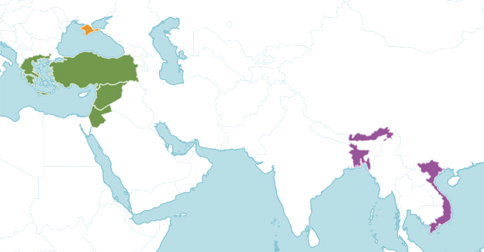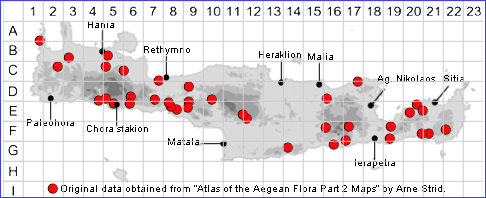
SPECIES DESCRIPTION
BRASSICA CRETICA subsp. CRETICA
Family and Genus:- See- CRUCIFERAE
Common Name:- Black mustard
Homotypic Synonyms:- None
Meaning:- Brassica (L) A name used by the Roman naturalist and philosopher
Pliny for various cabbage-like plants.
Cretica (L) From Crete, Cretan.
General description:- Perennial.
Stems:-
1) 80-120(-150), branching from the base.
Leaves:-
1) Basal, 10-15 cm, lyrate or spathulate; terminal lobe broad and rounded or
narrowly elongate, crenate or dentate, glabrous or with a few hairs on margins.
a) petioles, not more than 1/3 as long as the lamina;.
3) Cauline, usually auriculate at the base.
Flowers:-
1) Petals, 7-13 mm, white or pale yellow.
Fruit:-
1) Siliqua, 30-70(-90) x 3-5 mm, linear, attenuate into a beak 5-10 mm, usually as
broad as the siliqua at the base.
Key features:-
1) Upper cauline leaves, sessile or petiolate, not amplexicaul at the base.
2) Siliqua, appressed to stem.
Habitat:- Limestone cliffs of northern exposure or in gorges, also on flat stone
pavement of small non-grazed ravines 0-1100 m.
Distribution:- East Aegean Is., Greece, Crete, Lebanon-Syria, Palestine, Turkey.
Fairly widespread across Crete.
.
Flowering time:- Mar-May(-June). or later
Photo by:- Fotis Samaritakis
Doubtfully present in:
Krym
Native to:
East Aegean Is., Greece, Kriti, Lebanon-Syria, Palestine, Turkey
Introduced into:
Bangladesh, East Himalaya, Vietnam
Krym
Native to:
East Aegean Is., Greece, Kriti, Lebanon-Syria, Palestine, Turkey
Introduced into:
Bangladesh, East Himalaya, Vietnam


GLOBAL DISTRIBUTION

Native

Introduced
Doubtful
